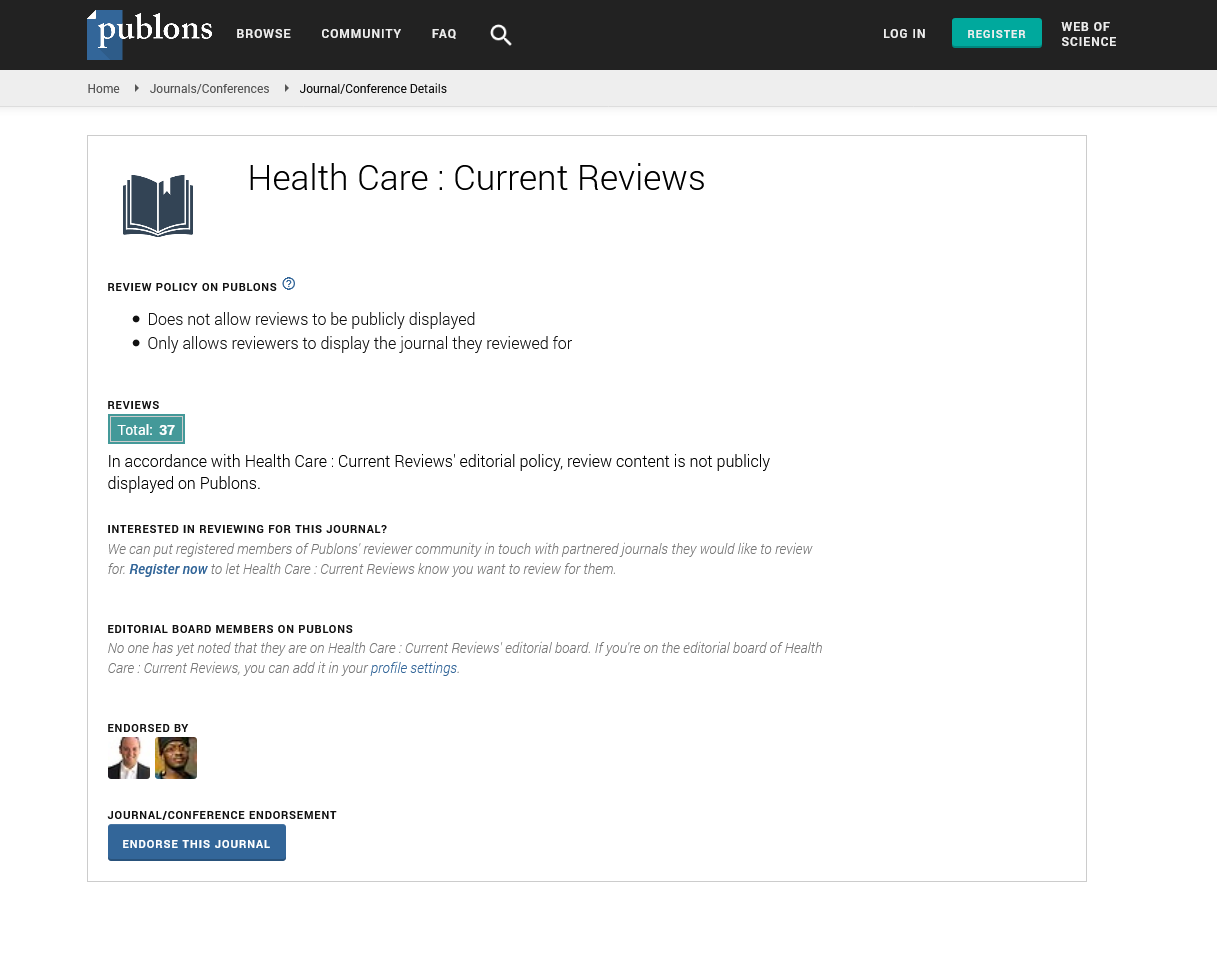Indexed In
- Open J Gate
- Academic Keys
- RefSeek
- Hamdard University
- EBSCO A-Z
- Publons
- Geneva Foundation for Medical Education and Research
- Google Scholar
Useful Links
Share This Page
Journal Flyer

Open Access Journals
- Agri and Aquaculture
- Biochemistry
- Bioinformatics & Systems Biology
- Business & Management
- Chemistry
- Clinical Sciences
- Engineering
- Food & Nutrition
- General Science
- Genetics & Molecular Biology
- Immunology & Microbiology
- Medical Sciences
- Neuroscience & Psychology
- Nursing & Health Care
- Pharmaceutical Sciences
EFFECTIVENESS OF A VIDEO BASED CONSENT PROGRAMME IN IMPROVING THE KNOWLEDGE OF PATIENTS REGARDING VENTRICULOPERITONEAL SHUNTING
13th World Congress on Healthcare & Technologies
June 14-15, 2018 | Dublin, Ireland
Metilda Robin, Teenu Xavier and Deepak Agrawal
All India Institute of Medical Sciences, India
JPNATC - All India Institute of Medical Sciences, India
Posters & Accepted Abstracts: Health Care Current Reviews
Abstract:
Introduction: Informed consent is the process by which the treating health care provider discloses appropriate information to a competent patient/relative so that the patient may make a voluntary choice to accept or refuse treatment. Obtaining informed consent and ensuring patient autonomy are critical to implementing a patient-centered model of healthcare. It is difficult to make patients fully understand about the indications, risks and treatment of complications, because the patients' condition may be too acute and the medical terminology used in acute care medicine is often complex. The treating doctors/nurses take consent from the patient formally without explaining about the procedure in detail or without ensuring that the patients have understood about it. The aim of the study was to assess the effectiveness of video based consent programme in improving the knowledge of patients posted for ventriculoperitoneal (VP) shunting regarding the surgical procedure. Methodology: A true experimental study (post only control group design) was conducted in a tertiary care hospital in India among the patients admitted for VP shunting procedure. Thirty patients were selected using simple random technique and randomized in to intervention or the control group. The study was conducted during a period of six months (July 2016-December 2016). The intervention group had consent obtained with the assistance of video information along with the conventional information. The control group received conventional/standard information from the physician (verbal group) regarding indications, risks, and treatment of complications due to the procedure. A self-administered questionnaire was used to assess the demographic details, knowledge level and satisfaction level in both the groups after explanation. Results: Data was analyzed using appropriate descriptive and inferential statistics. The knowledge score of patients in interventional group was higher than the subjects in the control group (p<0.001). 67% of the subjects in the interventional group were highly satisfied with the explanation. 60% of the subjects in the control group were dissatisfied about the explanation given to them. Conclusion: Video consent can be effectively used for taking consent from patients, which will give them a better understanding of what they are going through.

